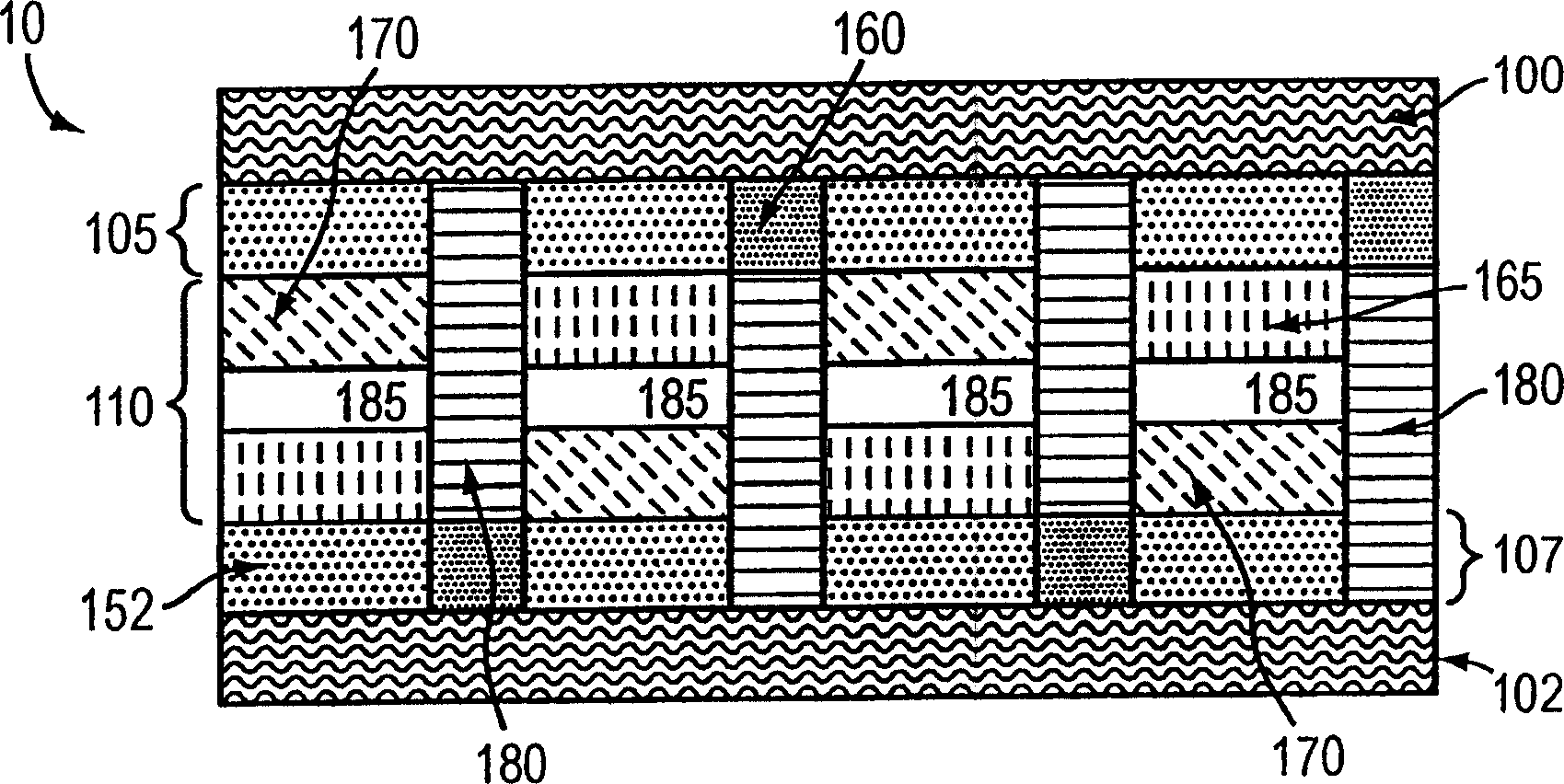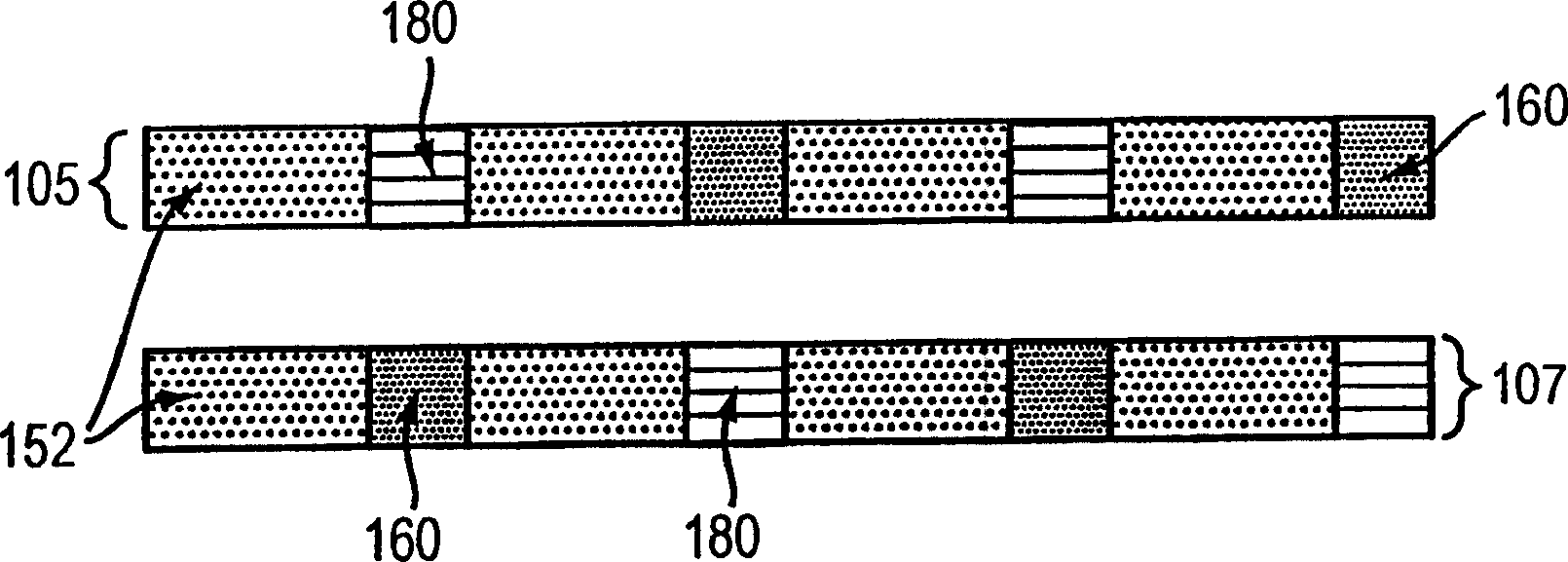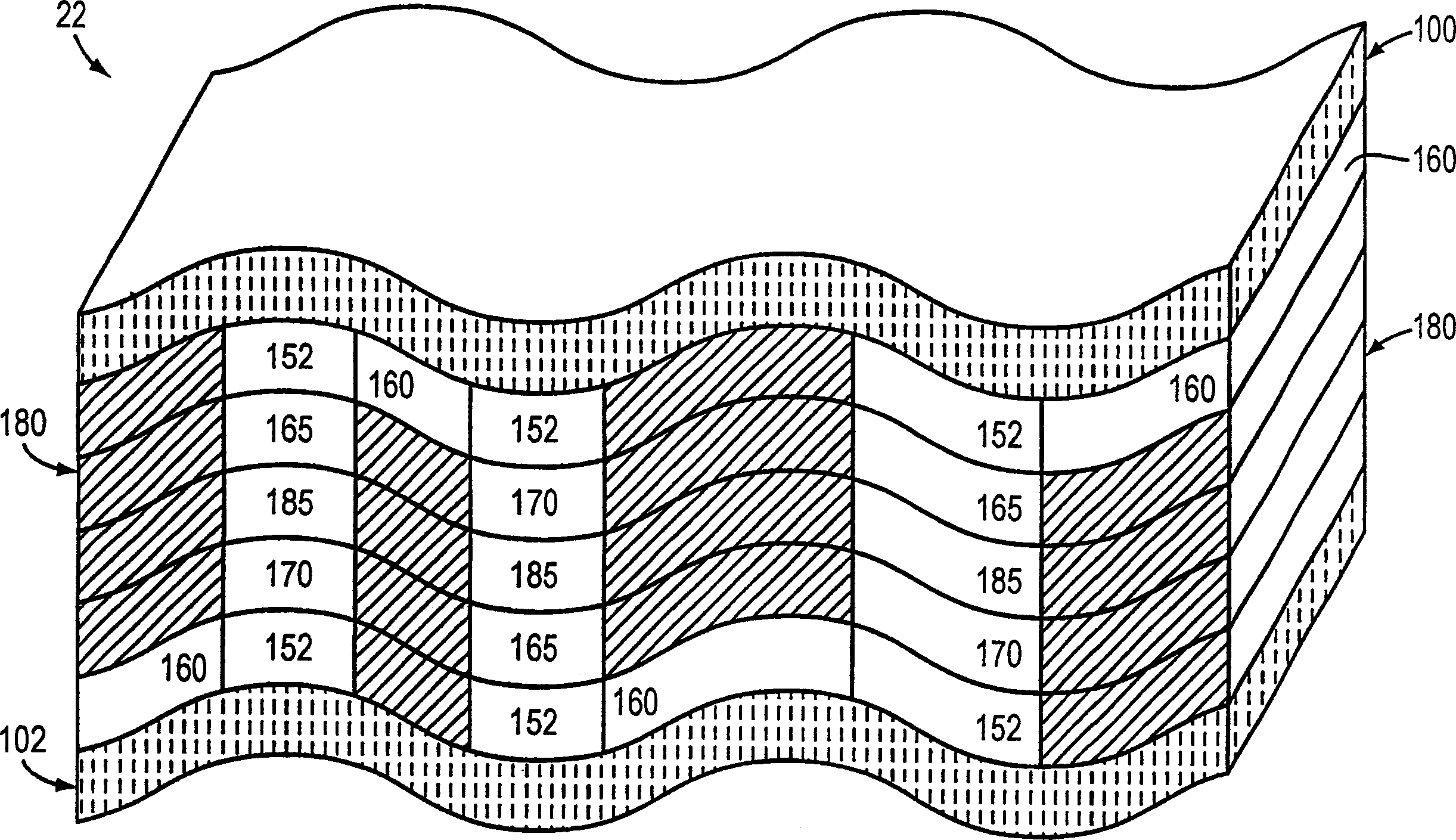Photovoltaic cell interconnection
A technology of photovoltaic cells and electrical connection layers, applied in photovoltaic power generation, primary batteries, circuits, etc., can solve the problems of upper boundary limit of photovoltaic module performance, increase of manufacturing failure, reduction of energy capture area, etc.
- Summary
- Abstract
- Description
- Claims
- Application Information
AI Technical Summary
Problems solved by technology
Method used
Image
Examples
Embodiment 1
[0078] Dye-sensitive solar cells have flexible substrates made according to the following procedure.
[0079] The thickness of the PET substrate is about 200 microns, about 10 mm x 10 mm square covered with about 200 nm thick ITO coating by thermal evaporation. By diffusing P25 (a commercially available crystalline TiO containing about 80% anatase and 20% rutile) in water (pH 3-4) 2 Titanium dioxide) to produce colloidal TiO 2 solution. TiO 2 Nanoparticle layers were formed on PET substrates by spin-coating deposition. To prepare the dispersion of the nanoparticles, it is possible to use, for example, microfluidization techniques, attrition techniques or ball milling techniques. After deposition the coating is heated to about 50°C for about 1 minute or less.
[0080] Coated with TiO 2 The PET substrate was then covered with a crosslinker solution containing 0.3 mM tetrabutyltitanium oxide solution in alcohol to attach the nanoparticles. The coated substrate was dried at...
Embodiment 2
[0083] Dye photosensitive photovoltaic cells with rigid substrates were fabricated according to the following steps.
[0084] Glass plate coated with ITO coating (surface resistance 8Ω / cm 2 ) by a layer through from TiO 2 Dispersion spin-coated about 10 µm thick TiO 2 (P25) Nanoparticle film covering. The coated slides were allowed to dry at room temperature for approximately 30 minutes and sintered in an oven at approximately 450°C for 1 hour for bonding.
[0085] The sintered slides were passed through a solution of cis-bis(thiocyanate)bis(2,2′-dipyridyl-4,4′-dicarboxylate)ruthenium(II) in alcohol (1 mg / mL) Soak slides in medium overnight to render dye photosensitizing.
[0086]A redox polyelectrolyte (10% polyethylene oxide, 90% 1:1 ethylcarbonate:propylcarbonate, 0.05M iodine and 0.5M LiI) was coated on the substrate, sandwiched between coated with A second glass plate with an ITO conductive layer about 200 nm thick and a platinum catalytic layer about 2.5 nm thick. ...
PUM
| Property | Measurement | Unit |
|---|---|---|
| size | aaaaa | aaaaa |
| size | aaaaa | aaaaa |
| glass transition temperature | aaaaa | aaaaa |
Abstract
Description
Claims
Application Information
 Login to View More
Login to View More - R&D
- Intellectual Property
- Life Sciences
- Materials
- Tech Scout
- Unparalleled Data Quality
- Higher Quality Content
- 60% Fewer Hallucinations
Browse by: Latest US Patents, China's latest patents, Technical Efficacy Thesaurus, Application Domain, Technology Topic, Popular Technical Reports.
© 2025 PatSnap. All rights reserved.Legal|Privacy policy|Modern Slavery Act Transparency Statement|Sitemap|About US| Contact US: help@patsnap.com



